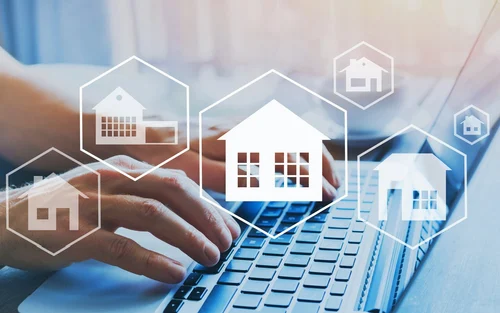In today’s rapidly evolving property landscape, technology plays a pivotal role in streamlining operations, reducing costs, and enhancing tenant satisfaction. One such transformative innovation is real estate development software. From automating workflows to enabling data-driven decisions, this technology is revolutionizing how property management functions.
In this article, we explore how real estate development software is reshaping the property management industry, the core features it offers, and the value it brings to developers, property managers, and tenants alike.
Understanding Real Estate Development Software
What Is Real Estate Development Software?
Real estate development software is a digital solution designed to assist developers, contractors, and property managers throughout the lifecycle of real estate projects. It helps with planning, budgeting, design coordination, documentation, leasing, maintenance, and reporting—all under one platform.
Who Uses It?
The software is primarily used by:
- Real estate developers
- Property managers
- Construction teams
- Architects and engineers
- Real estate investors
Key Features of Real Estate Development Software
1. Project Planning and Budgeting
This feature enables stakeholders to allocate resources efficiently, monitor expenses, and ensure that projects stay within budget. It includes:
- Cost estimation tools
- Gantt charts
- Resource allocation
- Financial forecasting
2. Document Management
Centralized storage of all project-related documents ensures version control and easy access for teams across multiple locations. Features include:
- Cloud storage
- Real-time editing
- Automated backups
3. Workflow Automation
From maintenance requests to lease renewals, automating repetitive tasks reduces manual effort and the risk of human error.
- Task scheduling
- Notification alerts
- Approval workflows
4. CRM and Leasing Tools
An integrated customer relationship management (CRM) tool helps with lead generation, communication, and lease tracking.
- Tenant onboarding
- Digital lease signing
- Lead management
5. Maintenance and Facility Management
Software solutions help track maintenance requests, assign tasks to service teams, and generate maintenance reports.
- Maintenance logs
- Vendor management
- Preventive maintenance alerts
6. Reporting and Analytics
Advanced analytics tools provide insights into occupancy rates, revenue trends, maintenance costs, and more.
- Custom dashboards
- KPI tracking
- Predictive analytics
Benefits of Using Real Estate Development Software
Increased Efficiency
By centralizing operations and automating tasks, property managers can handle more properties with fewer resources.
Cost Savings
Efficient budgeting, maintenance tracking, and error reduction contribute to significant cost savings over time.
Improved Tenant Experience
Features like mobile apps, online rent payments, and real-time communication enhance the tenant experience, boosting retention rates.
Data-Driven Decision Making
Access to real-time analytics empowers stakeholders to make informed decisions based on actionable insights.
Regulatory Compliance
Ensure compliance with local property regulations and building codes through automated alerts and documentation.
How It Is Reshaping Property Management
1. From Reactive to Proactive Maintenance
Traditional property management is often reactive, addressing issues after they occur. With predictive maintenance tools, software anticipates problems before they arise, reducing downtime and repair costs.
2. Enabling Remote Property Management
Cloud-based real estate software allows property managers to operate remotely. Whether it’s approving leases or tracking maintenance, everything is accessible from any device.
3. Enhancing Collaboration Across Teams
Software tools offer real-time collaboration features for developers, contractors, and property managers. Everyone stays on the same page, reducing miscommunication and delays.
4. Real-Time Financial Oversight
By integrating accounting modules and financial dashboards, real estate software enables instant access to budget performance, ROI metrics, and project cost reports.
5. Scalable Solutions for Growing Portfolios
For real estate firms with growing property portfolios, the software scales easily to accommodate new units, tenants, and projects without the need for a major system overhaul.

Challenges and Considerations
Implementation Costs
Although the long-term benefits outweigh the initial investment, small developers may find the upfront cost of high-end software daunting.
Learning Curve
Training teams to use new software effectively can take time and effort, especially for those less tech-savvy.
Data Security
Handling sensitive tenant and financial data means choosing a software solution with robust security protocols.
Future Trends in Real Estate Development Software
AI and Machine Learning
AI-powered tools can offer predictive analytics, automated lease suggestions, and enhanced customer service via chatbots.
IoT Integration
The integration of IoT devices can help monitor HVAC systems, lighting, and security in real-time, feeding data back to the software for smarter facility management.
Blockchain for Smart Contracts
Blockchain can streamline lease agreements and transactions, increasing transparency and reducing fraud.
Mobile-First Solutions
As mobile devices become the primary tools for work, expect more mobile-friendly platforms tailored for on-the-go property management.
Conclusion
Real estate development software is more than a digital trend—it is a necessity in today’s complex property landscape. From simplifying project management to enhancing tenant satisfaction and boosting operational efficiency, this technology is reshaping the property management industry. Whether you’re a small developer or a large property firm, investing in the right software can unlock new levels of productivity and profitability.
As the industry continues to embrace digital transformation, real estate development software will remain at the forefront, driving smarter decisions and better outcomes.
